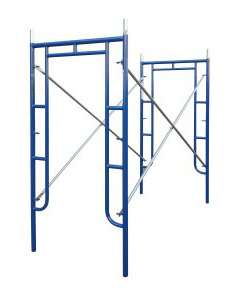S-Style Pattern Blue (Matches Safway)
Showing 1–15 of 16 results
-

S-Style 5′ X 5′ Ladder Frame Set w/ 7′ Bracing
SFL5X5SET7 $141.76 -

S-Style 5′ X 3′ Ladder Frame Set w/ 7′ Bracing
SFL5X3SET7 $133.16 -

S-Style 5′ X 4′ Ladder Frame Set w/ 7′ Bracing
SFL5X4SET7 $140.96 -

S-Style 5′ X 6’4″ Ladder Frame Set w/ 7′ Bracing
SFL5X64SET7 $157.76 -

S-Style 36″ X 6’4″ Walkthru Set w/ 7′ Bracing
SFW36X64SET7 $145.76 -

S-Style 42″ X 6’4″ Walkthru Set w/ 7′ Bracing
SFW42X64SET7 $174.08 -

S-Style 5′ X 6’4″ Walkthru Set w/ 7′ Bracing
SFW5X64SET7 $157.76 -

S-Style 5′ X 6’4″ Walkthru Scaffolding w/ Built-In Ladder Set w/ 7′ Bracing
SFWL5X64SET7 $205.76 -

S-Style 5′ X 3′ Ladder Frame Set w/ 10′ Bracing
SFL5X3SET10 $149.62 -

S-Style 5′ X 4′ Ladder Frame Set w/ 10′ Bracing
SFL5X4SET10 $154.96 -

S-Style 5′ X 5′ Ladder Frame Set w/ 10′ Bracing
SFL5X5SET10 $157.36 -

S-Style 5′ X 6’4″ Ladder Frame Set w/ 10′ Bracing
SFL5X64SET10 $173.36 -

S-Style 36″ X 6’4″ Walkthru Set w/ 10′ Bracing
SFW36X64SET10 $161.36 -

S-Style 42″ X 6’4″ Walkthru Set w/ 10′ Bracing
SFW42X64SET10 $189.68 -

S-Style 5′ X 6’4″ Walkthru Set w/ 10′ Bracing
SFW5X64SET10 $173.36
Choosing a Scaffolding Pattern
Scaffolding comes in a variety of patterns and sizes for a variety of applications. Below is a breakdown of our nomenclature, how we call our frames and what the terms mean. This is intended to give a person unfamiliar with scaffolding an idea of what frame they may need to suite their purpose.
Ladder Frame Scaffolding
A ladder frame is just that, a scaffolding frame built to be used like a ladder. We have them available in sections 5′ wide and either 5′ or 6’4″ tall. One vertical half of these frames consists of a ladder-rung pattern, while the other half is mostly open space, none except the lowest rungs which extend all the way across the frame, as opposed to just half way. This area can be stepped through at height when navigating between sections. Although these scaffold frames have great climbability and are the best all-purpose frames, the impediment of having to step over their bottom rungs can be a reason someone might use the following frame on a larger job.
Walkthrough Scaffolding
As the name implies, walkthrough scaffolding is built to be able to walk through. These scaffold frames are constructed in the form of a rectangular archway. When a platform is built underneath these frames along several sections of scaffolding, an unimpeded walkway is formed because of the archway construction. This scaffolding is a favorite of brick masons, and it’s benefits include the unimpeded work area they enjoy so much. Because there are no ladder rungs, however, these frames must be used in accompaniment with some sort of alternate climbing device; this could be our bolt-on external ladders, internal stair cases, or some other legal method.
Walkthrough Built-in Ladder
This is the do-it-all scaffolding frame, it is a hybrid of the walkthrough frame and the ladder frame. Built like the walkthrough frame, a ladder is added in one of the frames top corners extending below halfway down the frame. This allows for the unimpeded walkway of a walkthrough frame with good climbability with no external attachments.









